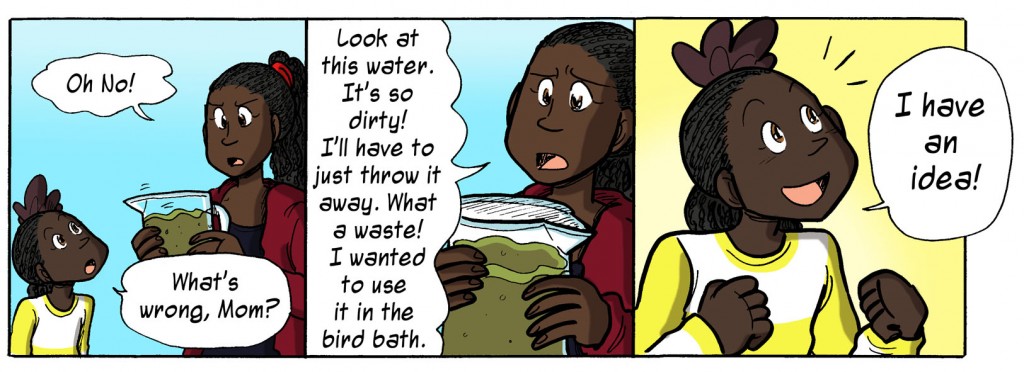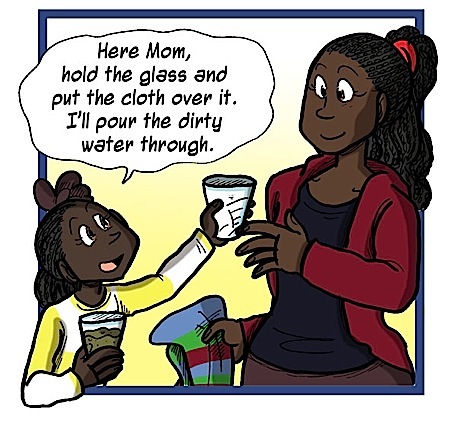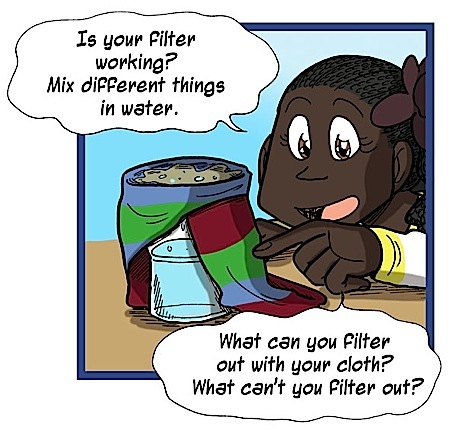ScienceWithMe! brings you another simple science experiment: Cleaning Water!
Many of you have written to me over the past few weeks asking for some more experiments. You seem to particularly enjoy our Science With Africa! series. So… I finally got time to put another one together. I hope you all have fun doing it at home or in the classroom, with the kids in your life. I am also trying to get this out to you before the weekend. Like me, I know the weekend is often the only time you get to do something just for fun. For our new readers… ScienceWithMe! is trying to spread science and scientific thinking around the globe. To this end, we have sponsored an expat in a rural community in Africa to get African kids doing ScienceWithMe! We hope you in the Americas, Australia, Europe and Asia follow suit!Enjoy this experiment! And be sure and leave Katy a comment below! Enjoy! elva

Do you want to help Katy and her mother clean the water for the birds?
Here’s what you need:

A piece of cloth
Some dirty water (with sand and leaves, etc.)
Another glass to catch the water

Can you do what Katy and her mom are doing?


“Look Mom! The dirt is coming out!"
“Now it’s clean!"*
(*Remember, this water might look clean BUT DO NOT DRINK IT!! It still has germs from the soil in it.)

Have Fun!!!!!
Parents’ Corner: Filtering is a very common laboratory technique. Insoluble solids, which are anything that has not been dissolved in the liquid, can be filtered out of mixtures in this way. The size of the insoluble solids that can be removed using filtration will be determined by the size of the filter that you use (i.e. the size of the holes in the filter). In our case we are using a cloth as a filter so it will only stop fairly large particles such as twigs, leaves, and coarse sand. To expand this activity you might choose different types of cloths to see which one makes the more efficient filter.In a laboratory or in an industrial setting, they would use very fine filters that can filter out very small particles. A filter does not stop solids that have been dissolved in the liquid, though. Get your child to dissolve food coloring in water and try to filter it out. It won’t work because the food coloring has been dissolved in the water. In the laboratory, dissolved solids can be removed from a liquid by distillation. In distillation, the solution is boiled and the liquid is allowed to evaporate and then it is condensed along a tube and collected at the other end. The dissolved solid remains behind and the pure liquid is collected at the other end of the tube. If you enjoyed this experiment be sure and check out our 19 Fun Science Experiments Every Parent Should do with Their Child!

